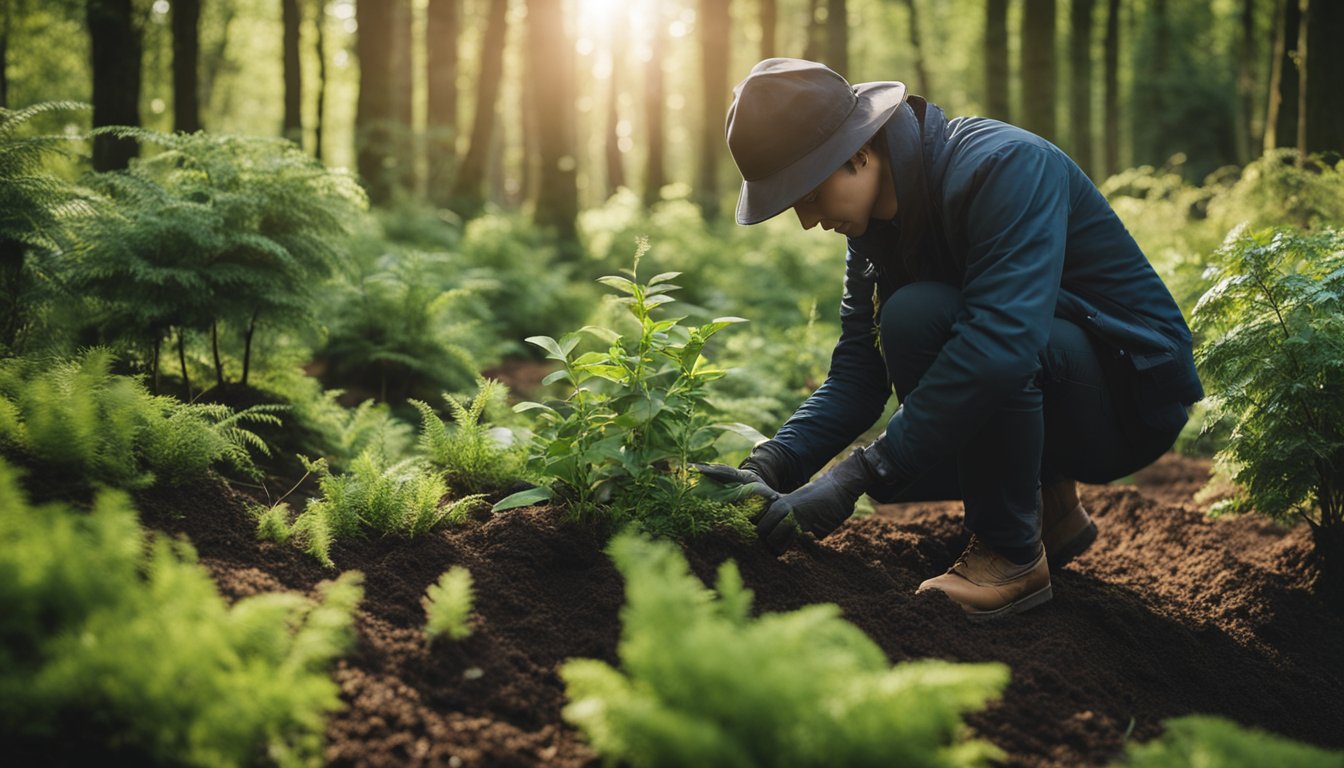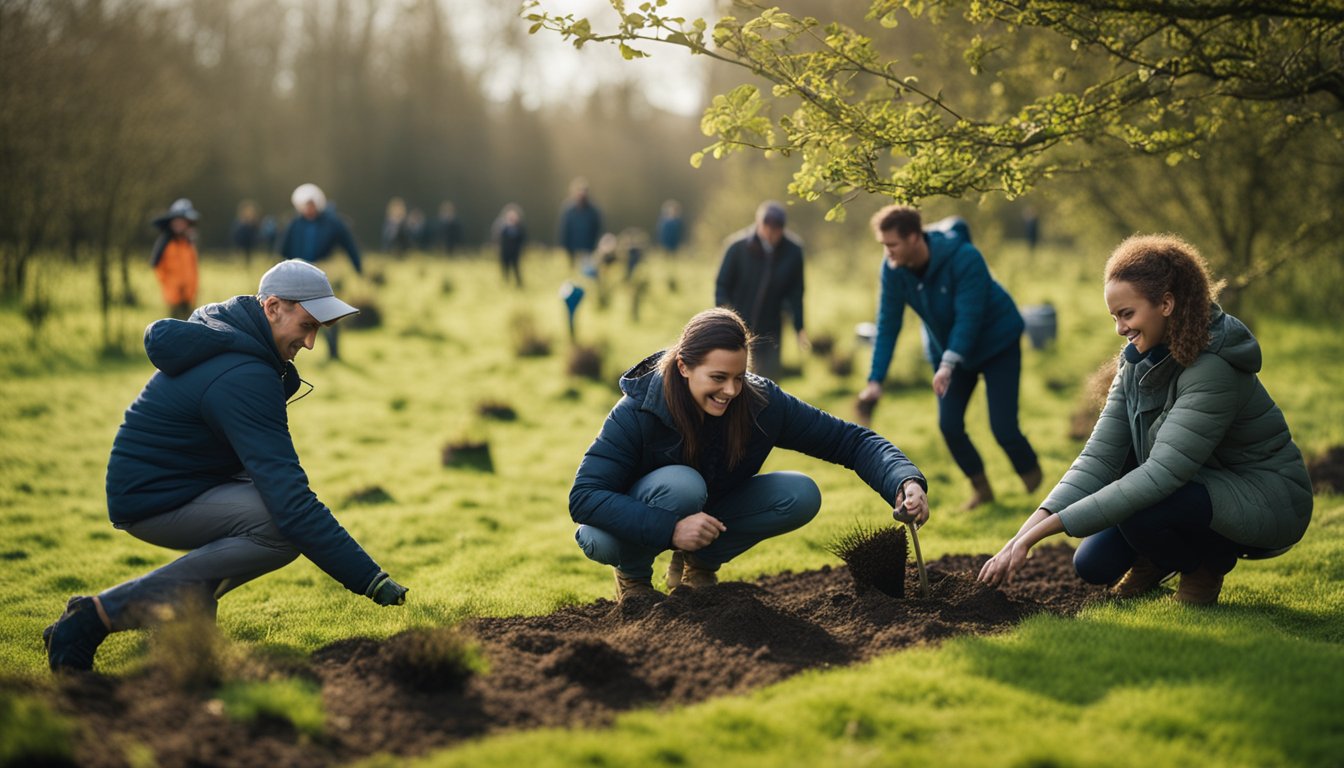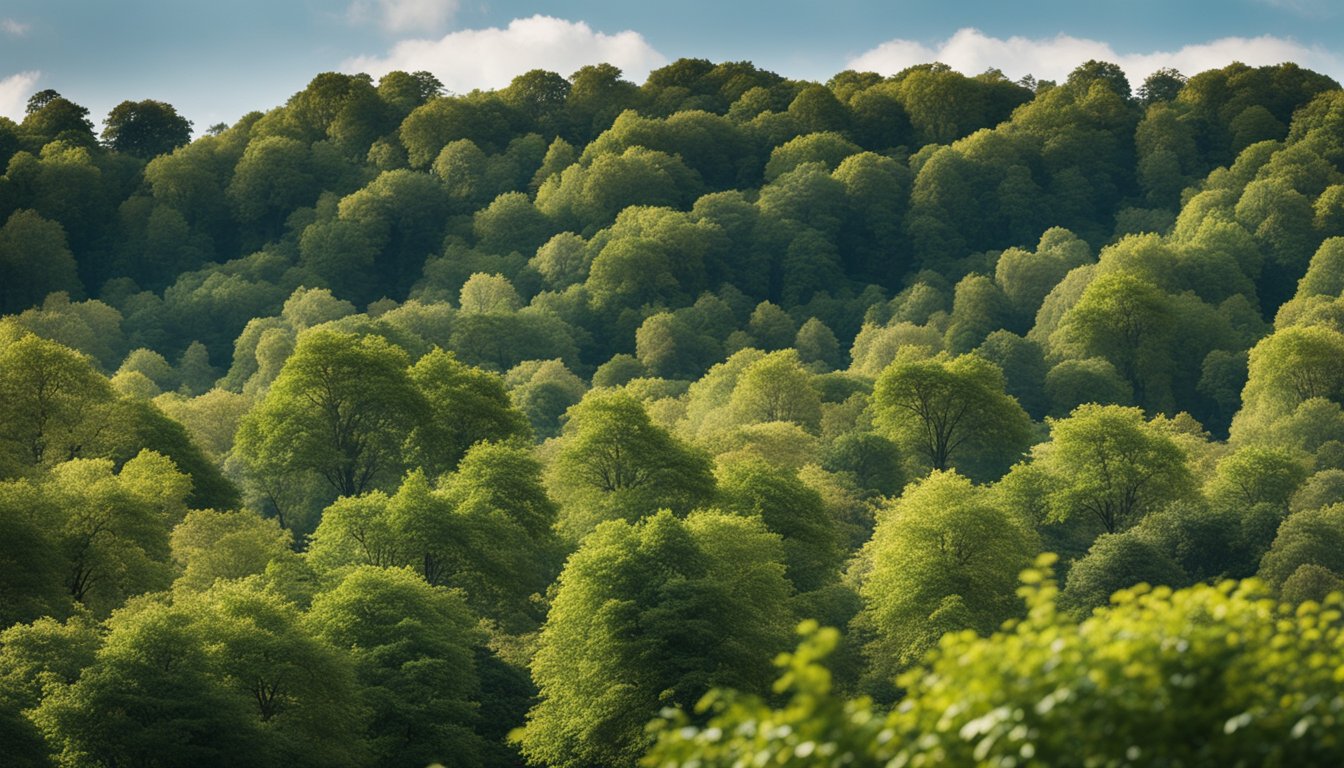Late updated: 27 Oct 2024 12:10
Written by: Emily Thornton
Planting Native UK Trees for Enhanced Biodiversity: Boosting Ecosystems Naturally
Planting native UK trees is a transformative act that can significantly enhance biodiversity within our ecosystems. At its core, this practice fosters resilient habitats, crucial for supporting diverse wildlife. Native trees are tailored to the local environment, offering food and shelter to indigenous species, ultimately creating balanced ecosystems. By integrating native species into our landscapes, we contribute both to preserving the unique biological diversity of the UK and to mitigating the impacts of climate change.

Imagine walking through a forest where each tree plays an integral role in sustaining life. This is the promise of native woodlands. Diverse tree species, each with unique characteristics, work together to create thriving natural communities. They provide ecosystem services, such as improving air quality and regulating water cycles, which are vital to human well-being.
In our efforts to restore and expand these woodlands, there are challenges and strategies to consider, from selecting the right species to ensuring their survival amidst environmental changes. These hurdles should not deter us, but rather inspire innovation and resilience. By prioritising native tree planting, we take a proactive step towards a more biodiverse and sustainable future.
Key Takeaways
- Planting native UK trees boosts local biodiversity.
- Native woods are crucial for ecosystem health and climate resilience.
- Addressing challenges in tree planting ensures environmental success.
Benefits of Native UK Trees to Biodiversity
Native UK trees offer a variety of ecological benefits essential for enhancing biodiversity. These trees support local ecosystems, maintain genetic diversity, and foster habitat connectivity. We explore their impact, focusing on how they bolster biodiversity through intricate ecological networks.
Supporting Ecosystems and Wildlife
Native woodlands are rich habitats teeming with life. They support a diverse range of wildlife, from birds and invertebrates to specialist species like the dormouse and violet click beetle. These trees provide essential resources such as food and shelter.
Fungal networks play a critical role in these ecosystems. They enable nutrient exchange and promote plant growth. Ancient and veteran trees serve as key hosts for these networks, nurturing both native plants and animals.
The trees also promote carbon sequestration and storage, serving as vital components of ecosystem services. Their presence helps tackle biodiversity loss by creating viable habitats for native species.
Maintaining Genetic Diversity and Resilience
Preserving genetic diversity within our native trees is paramount. Native species are adapted to local conditions, which enhances their resilience against diseases and climate change. This resilience supports overall forest health.
We enhance genetic diversity through natural regeneration and careful woodland creation. Planting varied native species rather than non-native conifers enriches the biodiversity value of these woodlands.
Such diversity ensures ecosystems can adapt and survive through changing conditions. Maintaining a variety of genetics among trees secures the long-term survival of both the trees and the wildlife depending on them.
Contributions to Landscape and Habitat Connectivity
Native trees contribute significantly to the connectivity of landscapes and habitats. They form corridors linking fragmented habitats, allowing wildlife to move and disperse freely. This movement is crucial for species survival, enabling gene flow and reducing inbreeding.
The strategic placement of trees near ancient woodlands or new woodland creation areas strengthens these connections. By integrating native tree species, we support seamless transitions between different ecosystems.
This connectivity fosters thriving ecosystems and contributes to a more resilient environment, which benefits both biodiversity and ecosystem services. Native woodlands, with their rich tapestry of life, play a critical role in this network.
Challenges and Strategies in Tree Planting

To enhance biodiversity in the UK's woodlands, we need to address specific challenges and implement effective strategies. These include overcoming barriers to native woodland expansion, adopting best practices for tree planting, and ensuring woodlands integrate well into broader environmental contexts.
Overcoming Barriers to Native Woodland Expansion
Expanding native woodlands in the UK faces hurdles like limited land availability and competition with agricultural use. Land scarcity often results in prioritising areas with lower economic value. We must focus on allocating land that supports multifunctional purposes such as agroforestry, which combines agriculture with strategic tree planting to optimise land use.
Another barrier is the threat posed by invasive species. Ensuring robust biosecurity measures is key to preventing the introduction and spread of non-native species. By enforcing stricter regulations and monitoring, we enhance the resilience of native woodland ecosystems. The UK Forestry Standard recommends practices that help in these efforts, guiding the creation of diverse woodland ecosystems that support native flora and fauna.
Best Practices for Native Tree Planting
Selecting appropriate native species is crucial for successful tree planting. Species like the Norway spruce and Sitka spruce, though prevalent, should be used judiciously. Mixed woodlands offer a more sustainable alternative by enhancing biodiversity and resilience.
Natural colonisation allows woodlands to regenerate naturally, reducing costs and promoting ecological stability. Planting in mixed patterns rather than monoculture plantations supports diverse species and reduces vulnerability to disease and climate change.
In managing forest cover, we should focus on carbon sequestration strategies, aiming to lower greenhouse gas emissions and contribute positively to climate control. Incorporating trees conducive to carbon capture ensures long-term sustainability, aligning with goals to offset carbon emissions.
Integrating Woodlands into the Broader Environmental Context
Building woodlands that complement the broader environment extends benefits beyond immediate ecological gains. Green spaces contribute to mental health, providing recreational areas that improve quality of life. They also play a role in air quality improvement and soil erosion prevention.
Integrating woodlands into peatland regions helps protect vital carbon stores while supporting historic environments. Land use adaptations should consider these broader impacts for a holistic approach.
Engaging communities in tree planting is crucial. Initiatives that incentivise community-led projects cultivate ownership and stewardship, enhancing overall cooperation. Our approach must remain integrated, ensuring that sustainable forestry practices align with national objectives to combat global warming and deforestation.
Frequently Asked Questions

Planting native UK trees offers numerous benefits, enhancing local ecosystems and supporting biodiversity. Below, we provide answers to common queries about native tree planting efforts and their impact on biodiversity.
What are the benefits of planting native UK trees for local ecosystems?
Native UK trees are well adapted to the local climates and soil types. They provide essential habitats and resources for native wildlife, including birds, insects, and mammals. Their presence helps maintain the ecological balance and ensure resilience against pests and diseases.
How does tree planting contribute to increased biodiversity in the UK?
Tree planting increases biodiversity by creating habitats and corridors for wildlife. These trees support various species, offering food and shelter. By connecting fragmented landscapes, they facilitate movement and genetic exchange among wildlife populations, enhancing ecosystem health.
Which native UK tree species are known to support the highest levels of biodiversity?
Some of the most supportive native tree species in the UK include oak, birch, and willow. Oaks, for example, can host hundreds of insect species, as well as birds and mammals. Birch trees support lichens, fungi, and a wide range of insects.
What incentives or grants are available for planting native trees in the UK?
There are numerous incentives and grants provided by government bodies and environmental organisations. Schemes like the Countryside Stewardship and Woodland Creation Grants offer financial assistance to landowners and communities who commit to planting native species and enhancing biodiversity.
In what ways does natural woodlands regeneration aid biodiversity compared to planted forests?
Natural woodland regeneration promotes biodiversity by allowing ecosystems to develop organically. This process encourages diverse species of plants and animals to thrive. In contrast, planted forests often lack the complexity and varied structure necessary for supporting a wide range of organisms.
How can individuals and communities get involved in tree planting initiatives for biodiversity enhancement?
Individuals and communities can participate in tree planting efforts through local conservation groups and national campaigns. Volunteering for reforestation projects or starting community-led initiatives are effective ways to contribute. Additionally, supporting organisations that specialise in biodiversity projects can maximise our collective impact.
